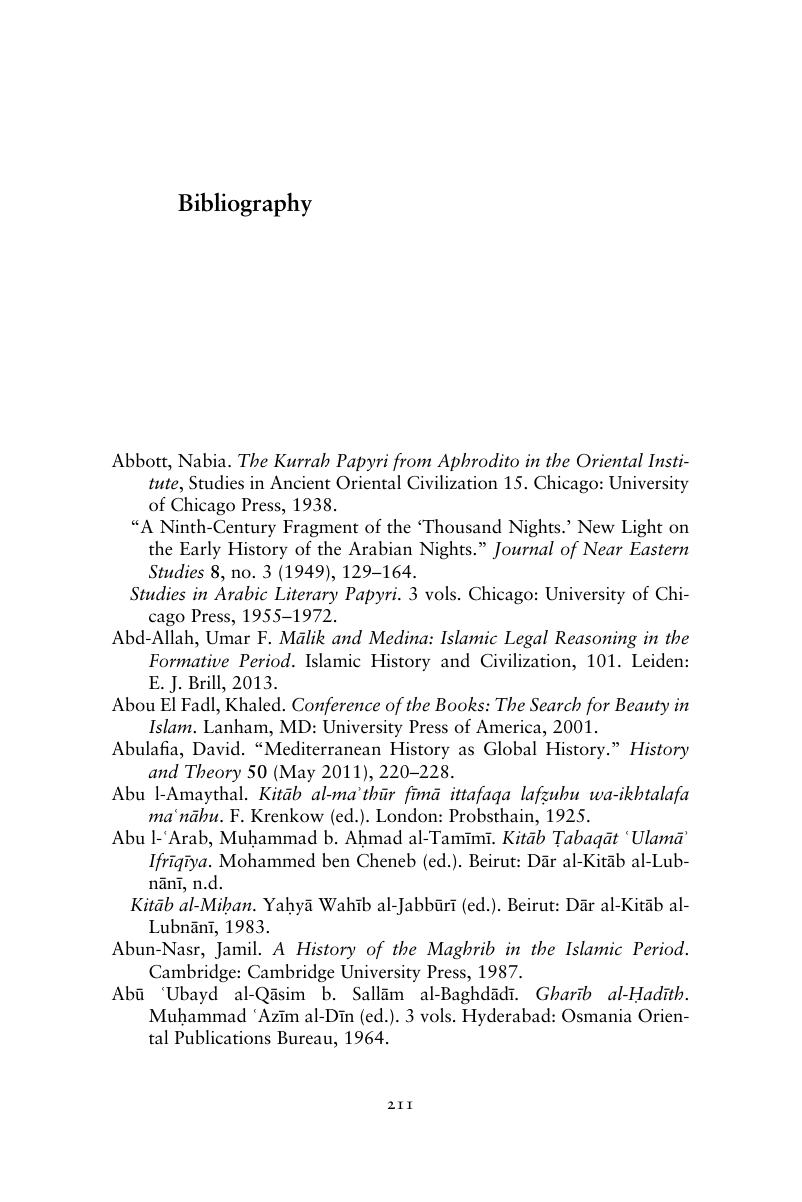Book contents
- Muhammad’s Heirs
- Cambridge Studies in Islamic Civilization
- Muhammad’s Heirs
- Copyright page
- Contents
- Figures
- Acknowledgments
- Note on Transliteration and Dates
- Introduction
- 1 Foundations, 622–680
- 2 Integration of the Proto-Scholar, 680–750
- 3 Rise of the Muslim Scholar, 750–820
- 4 Scholarship and the Literary Turn, 820–880
- 5 The Mature Scholarly Community of Kairouan, 880–950
- Conclusion
- Appendix
- Bibliography
- Index
- Series page
- References
Bibliography
Published online by Cambridge University Press: 28 July 2017
- Muhammad’s Heirs
- Cambridge Studies in Islamic Civilization
- Muhammad’s Heirs
- Copyright page
- Contents
- Figures
- Acknowledgments
- Note on Transliteration and Dates
- Introduction
- 1 Foundations, 622–680
- 2 Integration of the Proto-Scholar, 680–750
- 3 Rise of the Muslim Scholar, 750–820
- 4 Scholarship and the Literary Turn, 820–880
- 5 The Mature Scholarly Community of Kairouan, 880–950
- Conclusion
- Appendix
- Bibliography
- Index
- Series page
- References
Summary

- Type
- Chapter
- Information
- Muhammad's HeirsThe Rise of Muslim Scholarly Communities, 622–950, pp. 211 - 226Publisher: Cambridge University PressPrint publication year: 2017

